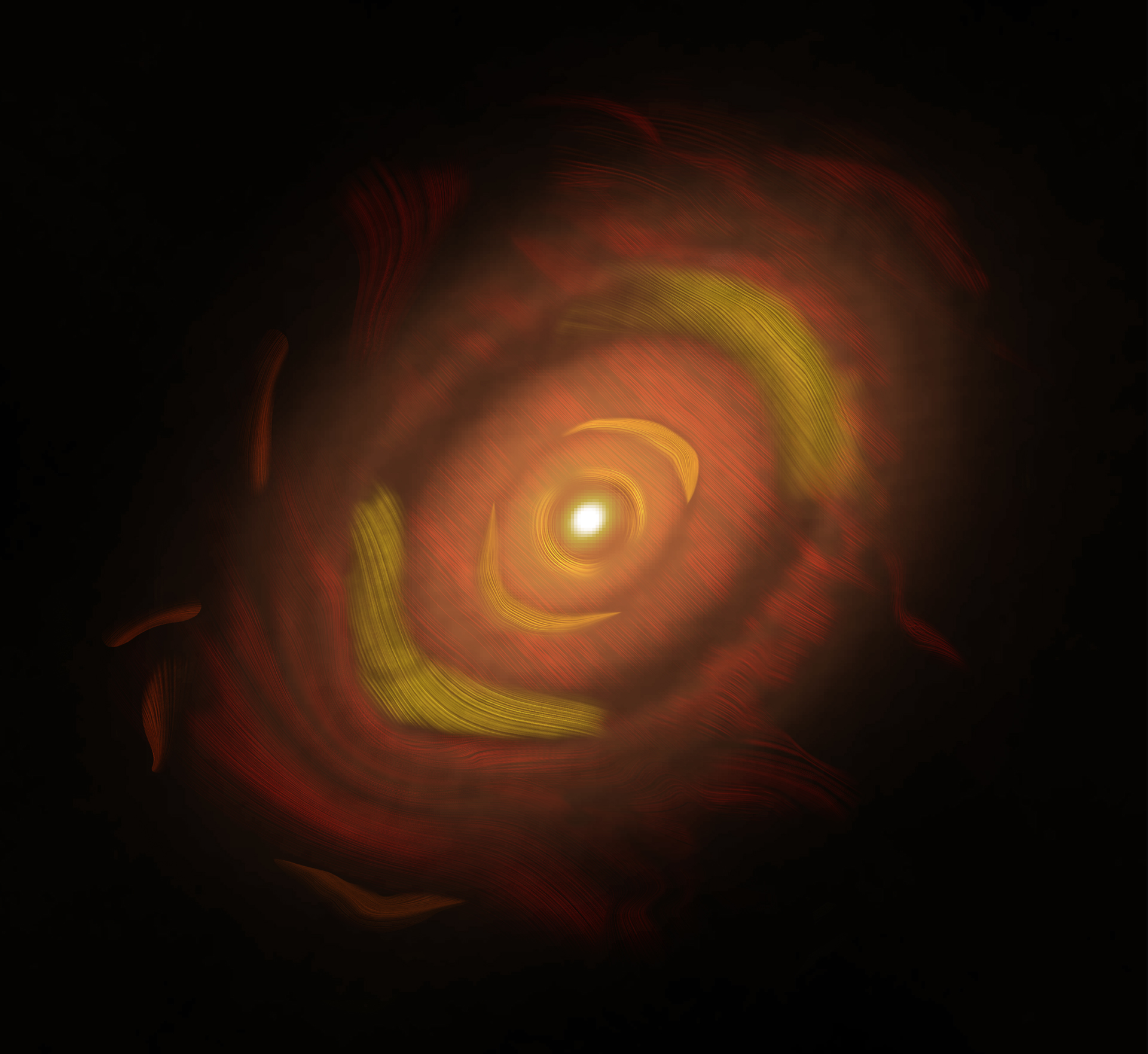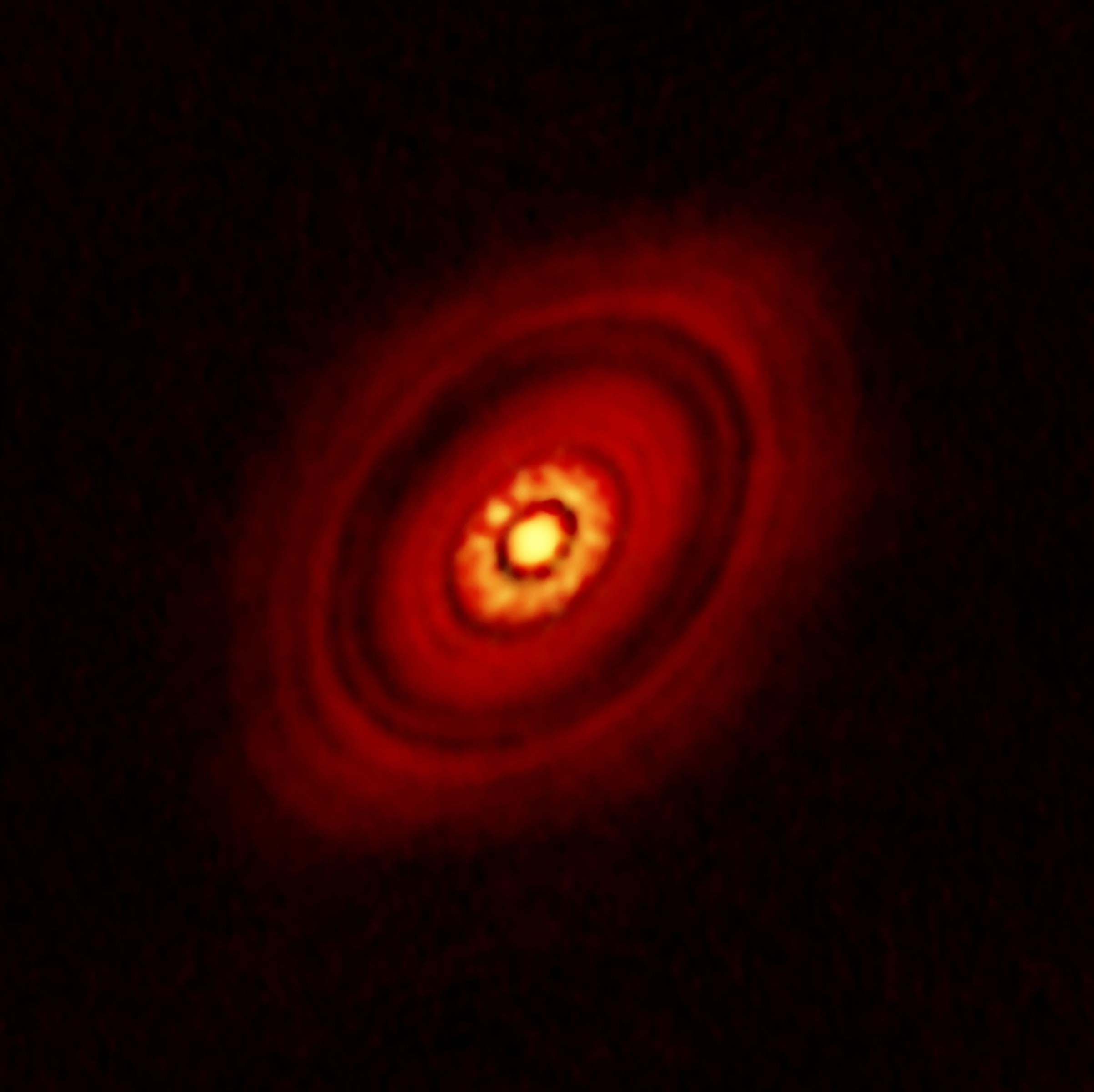Planets form from a disk of gas and dust that often surrounds young stars. A new study published today in the journal Nature and coauthored by Carlos Carrasco-Gonzalez, a researcher at the Institute of Radio Astronomy and Astrophysics (IRyA) at UNAM, Campus Morelia, reveals previously unseen properties of the dust within the disk around the young star HL Tau, shedding new light on the process of planet formation.
HL Tau is a young star 480 light-years away surrounded by a protoplanetary disk made of gas and dust. The disk has visible gaps which could be where young protoplanets are forming, in a process we still don’t fully understand. During this process, dust grains in the disk collide and stick to each other, causing them to slowly grow to potentially become larger objects like planets.
A way to study dust grains in these structures is to look at the orientation of the light waves they emit, known as polarization. The study published today is based on 10 times more polarization measurements than of any other disk, and 100 times more than most disks. The resulting image is by far the deepest polarization image of any disk yet. It has a resolution of 5 Astronomical Units, which is about the distance from the Sun to Jupiter, revealing the finest details of polarized light in a protoplanetary disk so far.
Dust grains are not often spherical. They can be oblate like a baked egg yolk, or prolate like a grain of rice. When light is emitted by or scatters off these dust grains, it can become polarized, meaning that the waves of light are oriented in a particular direction rather than just randomly. The new results suggest that the dust within the disk behaves more like prolate grains, putting strong constraints on the shape and size of these dust grains.
A surprising result of the study is that there is more polarization within the gaps of the disk than the rings, even though there is more dust in the rings. The polarization within the gaps is more azimuthal, i.e., it “follows” more the shape of the disk, which suggests the polarization comes from emission of aligned dust grains within the gaps. The polarization of the rings is more uniform, suggesting it largely comes from scattering. Based on the data, it is unclear what is causing the dust grains to align, but they are likely not aligned along the magnetic field of the disk, which is the case for most dust outside of protoplanetary disks. Currently, it is thought that the grains are aligned mechanically, perhaps by their own aerodynamics, as they revolve around the central young star.
“These results are very important, because now we know that to explain the difference in the pattern of polarized light between the gaps and the rings, we need a larger dust density in the rings than in the gaps. This means that most of the dust in the disk at this moment is in the rings, which makes them ideal places for new planets to be formed,” says Carlos Carrasco-Gonzalez. “We knew there is probably protoplanets already formed in the gaps, but now we need to look into the rings to better understand the early stages of planetary formation. Because they are very dense, it is difficult to study the rings with current instruments. That is why we need the Next Generation Very Large Array (ngVLA)”, a new radio observatory, currently in its design stage, which will be composed of more than 250 antennas, distributed mainly in the southern United States (Arizona, New Mexico and Texas), with some antennas located in northern Mexico and Canada.
 Rings of dust surrounding the young star HL Tau, with line patterns showing the orientation of polarized light. This is the deepest dust polarization image of any protoplanetary disk captured thus far, revealing details about the dust grains in the disk. Image credit: NSF/AUI/NRAO/B. Saxton/Stephens et al.
Rings of dust surrounding the young star HL Tau, with line patterns showing the orientation of polarized light. This is the deepest dust polarization image of any protoplanetary disk captured thus far, revealing details about the dust grains in the disk. Image credit: NSF/AUI/NRAO/B. Saxton/Stephens et al.
Carlos Carrasco-Gonzalez career
Carlos Carrasco-González has a PhD in astrophysics from the University of Granada and the Instituto de Astrofísica de Andalucía (IAA-CSIC). He has been a researcher at UNAM since 2013. He uses radio interferometers such as ALMA (Atacama Large Millimeter Array) and the VLA (Very Large Array) to study the magnetic field and collimation mechanisms in protostellar jets and the evolution of dust and planet formation in protoplanetary disks.
He has been head of postgraduate studies in astrophysics at the Institute of Radioastronomy and Astrophysics, and organizes a summer research program at IRyA for undergraduate students from Mexico and other Latin American countries. He is part of the Next Generation Very Large Array (ngVLA) collaboration in Mexico, supporting the logistics related to the antennas planned to be located in northern Mexico.
Research paper
Aligned grains and scattered light found in gaps of planet-forming disk
Ian W. Stephens et al., Nature 2023, 623, 7987
https://www.nature.com/articles/s41586-023-06648-7
About IRyA, UNAM
The Instituto de Radioastronomía y Astrofísica (IRyA), or Institute for Radioastronomy and Astrophysics is an academic unit at UNAM, Campus Morelia, Mexico. We perform high-level and high-impact research in the areas of interstellar medium, star formation, evolved stars, high energy astrophysics, Galactic dynamics and structure, extragalactic astronomy and cosmology. We contribute to the education of high-level human resources through a postgraduate program, and we have close contact with society through diverse outreach programs.
If you are interested in our Institute, visit the English version of our webpage, www.irya.unam.mx/web/en
Media contact:
Dr. René A. Ortega Minakata
Outreach and Science Communication
IRyA UNAM Campus Morelia
Text: IRyA UNAM, based on the ALMA/NRAO press release (https://public.nrao.edu/news/alma-observation-of-young-star-reveals-details-of-dust-grains/)

Protoplanetary disk around the young star HL Tau. Its structure of rings and gaps can be observed, as well as a clump of dust in its innermost ring, in which a terrestrial-type planet could form. Image credits: Carrasco-Gonzalez et al.; Bill Saxton, NRAO/AUI/NSF




